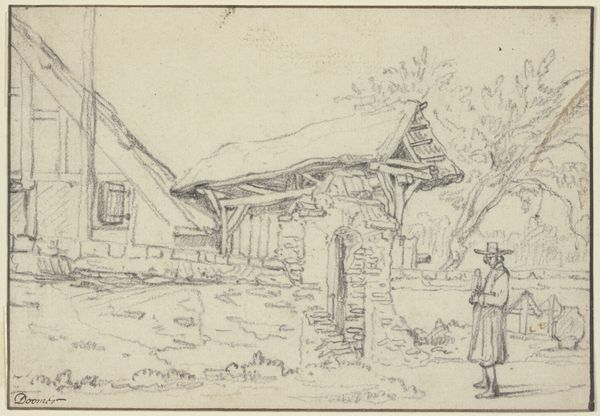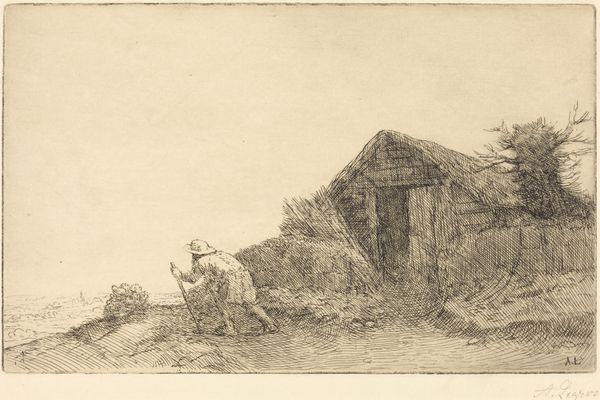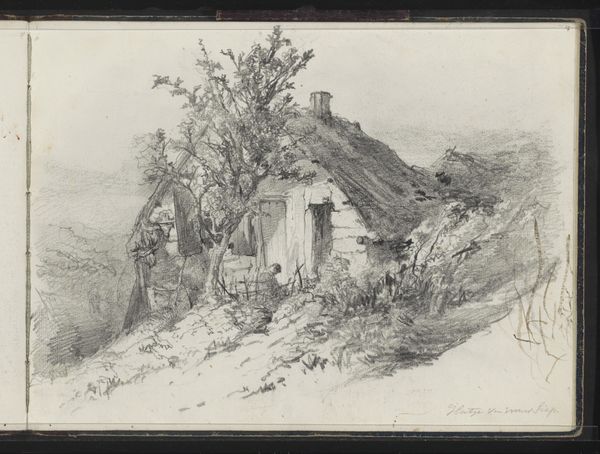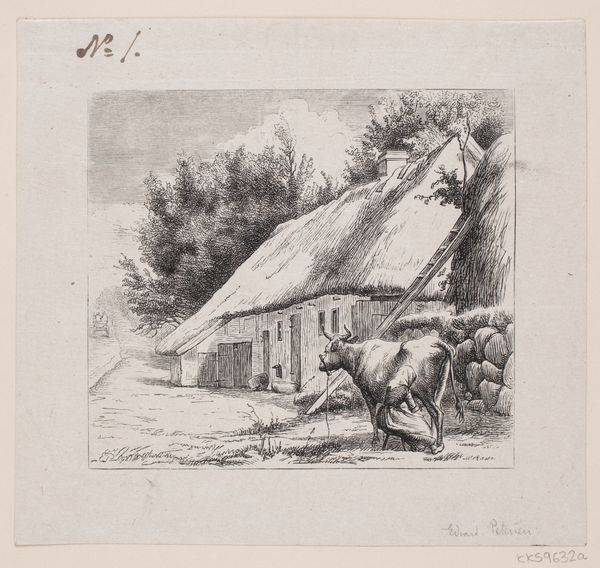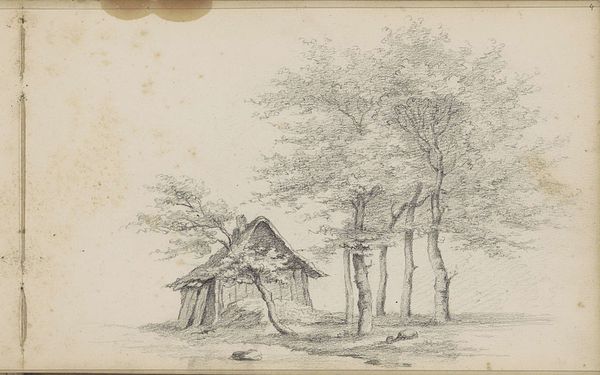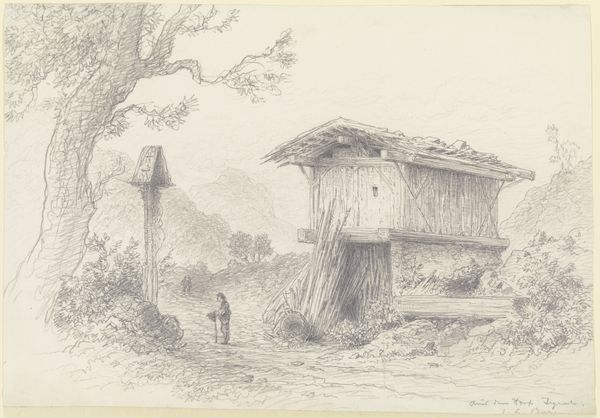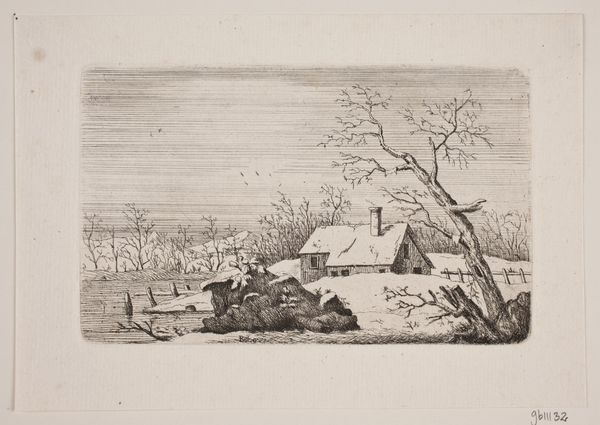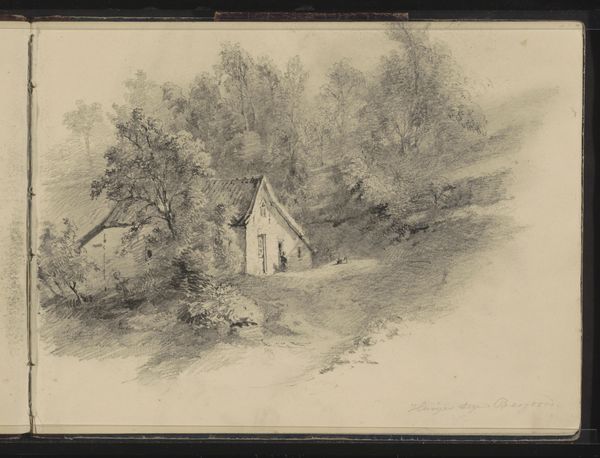
drawing, pencil
#
drawing
#
quirky sketch
#
dutch-golden-age
#
mechanical pen drawing
#
pen sketch
#
sketch book
#
landscape
#
personal sketchbook
#
ink drawing experimentation
#
pen-ink sketch
#
pencil
#
pen work
#
sketchbook drawing
#
sketchbook art
#
realism
Copyright: Rijks Museum: Open Domain
Curator: This pen and pencil drawing is entitled "Huis in het Zweiersdal te Oosterbeek," placing it around Oosterbeek. It's by Maria Vos, dating from around 1864 to 1865. What are your first impressions? Editor: My eye is immediately drawn to the sketch-like quality and range of darks and lights, and I love the way Vos has rendered the building's materials. It feels honest and direct. Curator: It is that directness which draws me in as well. Sketches like this offer an unvarnished glimpse into the daily life and landscapes valued during the Dutch Golden Age—a bit idealized maybe, but interesting in that choice. How would this image circulate then, who would see it, and why? Editor: Perhaps, this was a practice piece, something made in her sketchbook from which more formal compositions were derived for exhibitions and galleries later, possibly as a reference for a larger work. Note her rendering of shadow—is she playing with perspective and light effects in her process? Curator: Possibly. This makes me think of artistic training in that era; Maria Vos clearly benefited from certain educational structures and artistic traditions to be able to represent this house and surrounding nature so faithfully, especially through tonal gradations using just pencil and pen. This demonstrates not only her observational skill, but a socio-cultural approach to the landscape tradition, right? Editor: Exactly. It shows the artistic values she was taught but also what *she* valued. I'm also curious about that cow near the doorway. Why include the farm animals grazing at the forefront and two tiny humans who fade into the surroundings. How do animals and labor enter into Vos' artistic practice? Curator: Ah, but does it not humanize this rural scene—emphasizing co-dependence perhaps? Also consider the choices of imagery; farm life was changing socially and politically as urbanization began reshaping Dutch society during her life. Maybe she is memorializing something slowly fading. Editor: Perhaps. Either way, it's intriguing to see how this work mediates her relationship with the rural economy. Vos turns the ordinary—house, fields, animals—into a worthy subject of close study, prompting our inspection of humble materials with an eye toward labor and value. Curator: Very interesting take. I think for me the study's main merit lies in illustrating broader developments within artistic movements. However, seeing it through a Materialist lens has revealed other avenues for reflection, too. Editor: And for me, connecting with her techniques offers insight into Dutch life. The means and materials offer intimate details worth consideration beyond standard readings of Golden Age work.
Comments
No comments
Be the first to comment and join the conversation on the ultimate creative platform.

